Ready? Go!
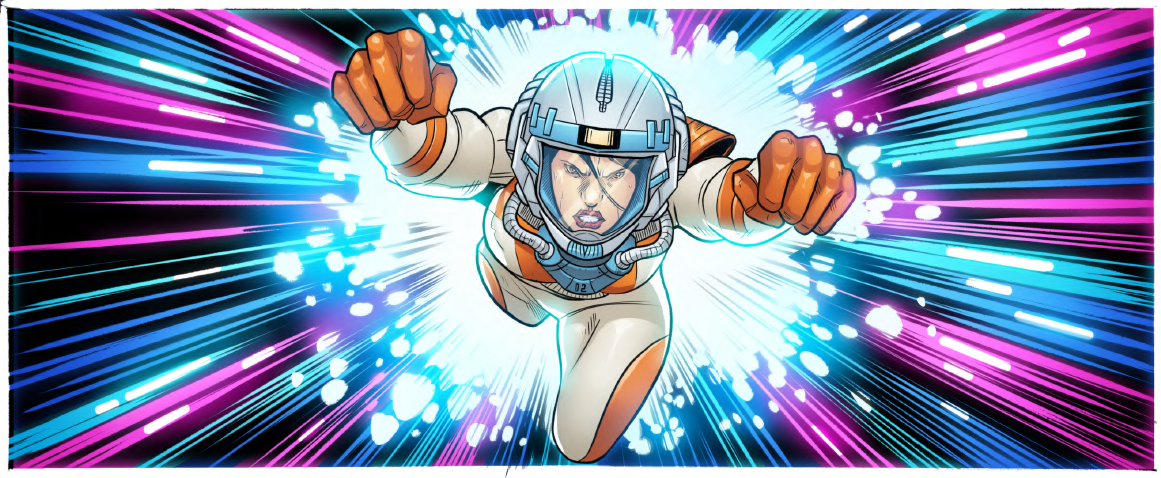
When embarking on a new comic series, do you like to have your universe fully established? Do you like your heroes and villains fully fleshed out in the first few pages so that you can then relax and immerse yourself in events?
Move along. Stellar Drift is not for you.
As we jump straight in on page one of this eight issue series, we may be forgiven for thinking we’ve missed an issue, or at least a prologue. With just enough expository dialogue to learn that she is something special, we are rapidly introduced to both our hero – Daffney, AKA Anvil Liza – and her upcoming mission. It must be said that setting up the reader with the background needed to enjoy the coming story, without bogging down in complex detail is a fine balancing act. The author has walked this tightrope with aplomb.
Character and plot introduced, away we go.
The Story: Aliens and Ice
Introduced and briefed on her mission, our hero sets off on a voyage through space to her destination, an icy moon orbiting the planet Apolaki. Her objective: investigate a base with which contact was lost 50 years previously. However, for those expecting a rescue mission, it might be worth considering government and military priorities around lives and assets. Intrigued? Read the book.
The journey through space, and the preparation for it, reveal a few quirks about the hero that serve to humanise her somewhat – despite the fact that her abilities clearly mark her as something other than mere human. This journey also provides the opportunity for the first use of a clever narrative technique: the use of contemporary advertising to drive developments in both character and plot. Even various props are explained in this way. Three or four of these interludes are used, breaking the story just enough to not be obtrusive.
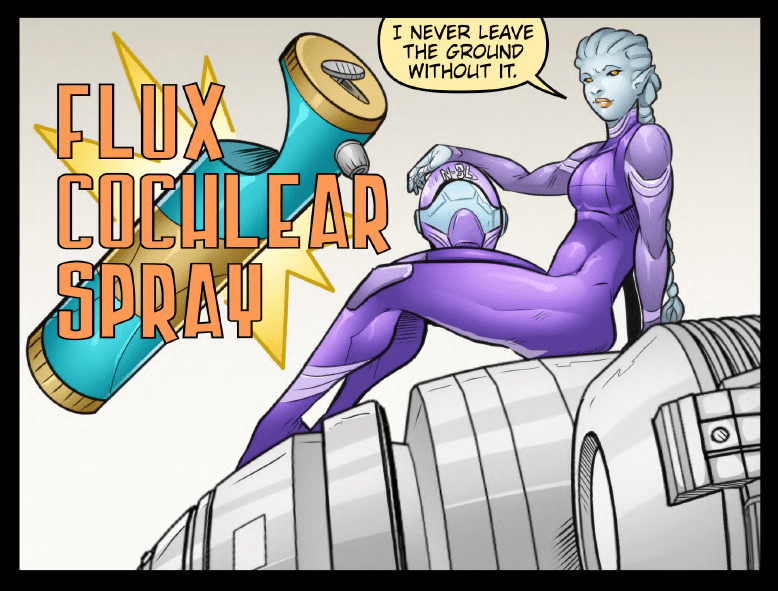
After a slightly eventful journey, Daffney arrives at her destination in a somewhat… eventful manner. Her arrival is noticed and she immediately encounters and skirmishes with the local occupants. After being disabled and captured, she rapidly turns the tables and is surprised to be confronting two very scared youths.
It is at this point that the book becomes somewhat heavy in expository dialogue, in which our hero brings her captives (and us) up to speed on the politics of the situation. The needed verbosity is not taken as natural, in the manner of many comics of the past. It is rather highlighted and provides an opportunity for character interaction. However, it is kept to minimum and the action soon resumes.
With her new companions, Daffney sets about her mission. As they encounter various of the life forms inhabiting the moon, they slowly get to know each other. The youths in fact are particularly insightful about one of Daffney’s main weaknesses, providing her with insights not considered worth sharing with her by those who raised her. At their destination, they discover a spaceship that appears to have been shot down – a spaceship that seems to have special significance to all three of them. But before they have time to deal with this, the action picks up again. Another battle, some unreliable old technology and a turning of the tables keep the pages turning until tragedy strikes. After a few loose ends are wrapped up, we are left with the image of Daffney leaving the moon, bound for…?
Story and Art
The essence of good comic book storytelling is to allow the art to tell as much of the story as possible, using words to expand on but not duplicate the visual tale. In Stellar Drift, we are presented with pages at a time in which the pictures tell the whole story – and tell it well.
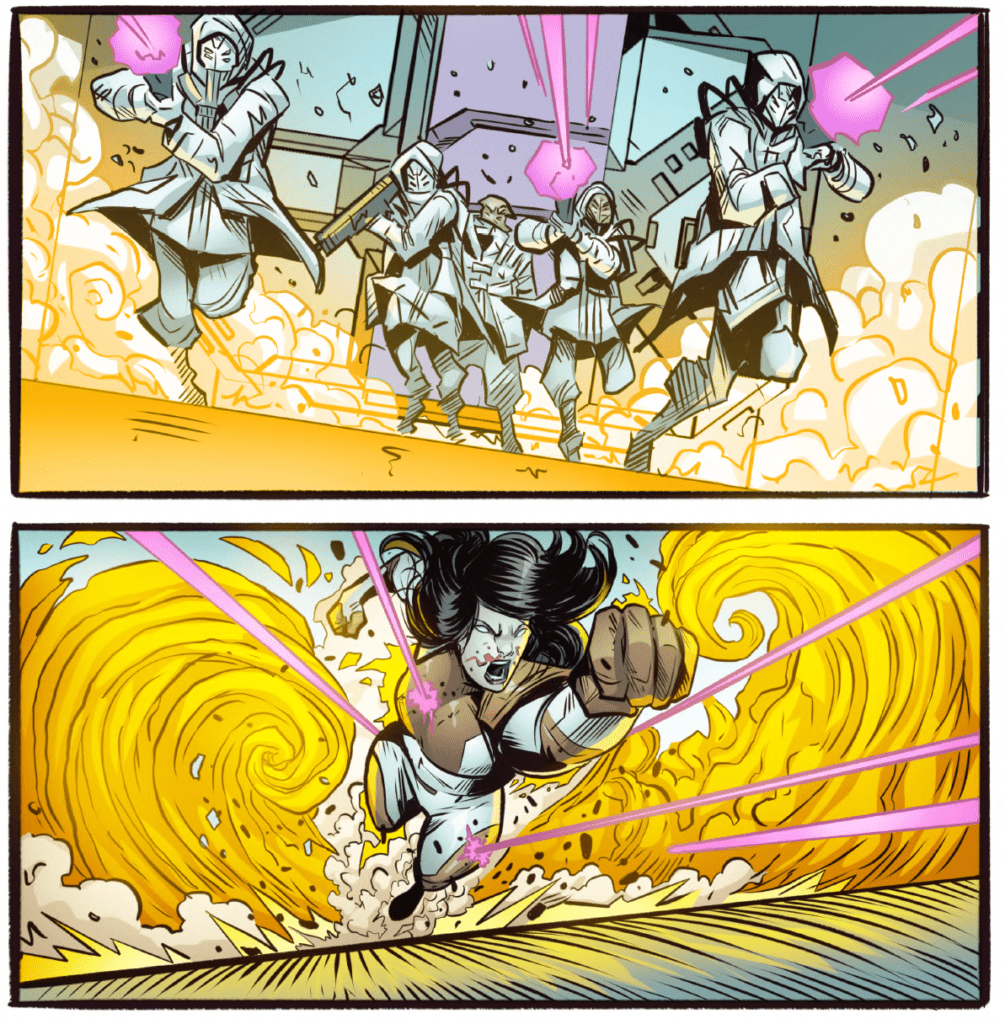
There is no narration. Exposition is handled by a mixture of the graphics, dialogue and the previously mentioned interspersed advertising segments. The action is dynamic when needed and the use of camera angles and panel layout combine nicely to keep the story flowing smoothly and engagingly.
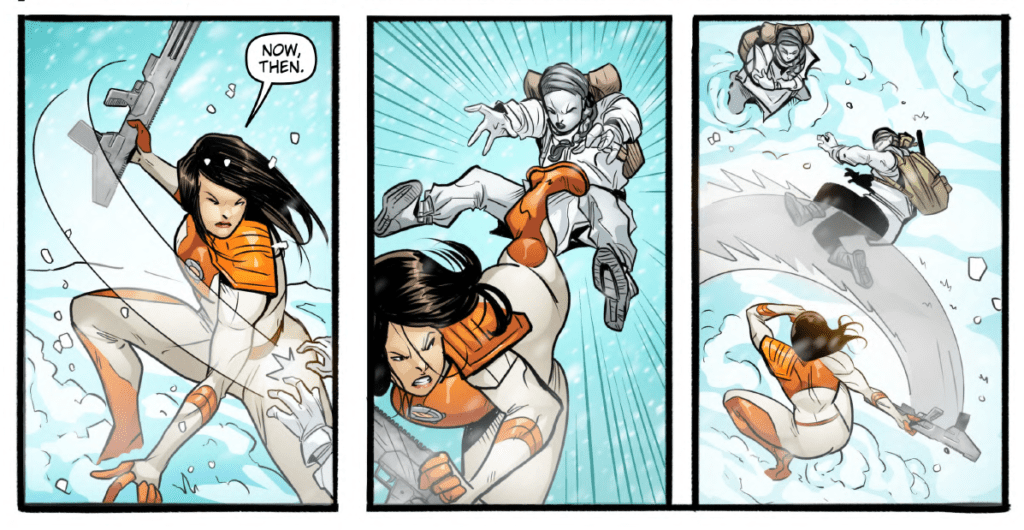
Except for the one expository scene mentioned, dialogue is spare and concise. Interestingly, all dialogue in the aliens’ language is written in that language and not translated. This does not impact the storytelling. The art is sufficient to convey a sense of what is being said.
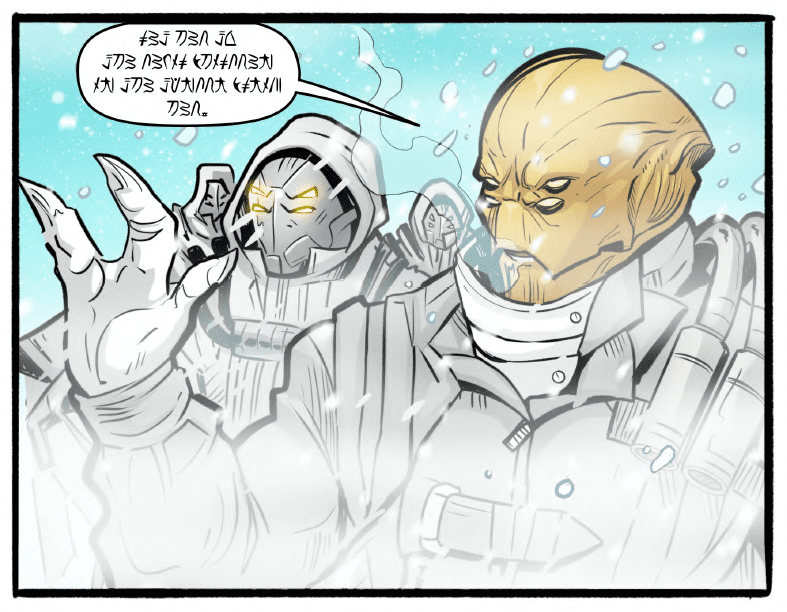
Many modern comic books use a rather dark colour palette, in pursuit of realism, grittiness or both. This is not the case here. Colours are vivid and bright when necessary and clear and subdued when not. All scenes are well lit, which itself greatly helps the flow of the story.
Conclusion
When reading the first part of a limited, self-contained comic book series, There are expectations on the part of the reader. We want to know the characters. We want to know what’s going on and, to an extent, why. Most of all, we want to enjoy the ride and be left both satisfied and wanting more. With Stellar Drift, we have all of this. There are mysteries to solve and wrongs to right. We don’t know what is coming next… but we want to.
